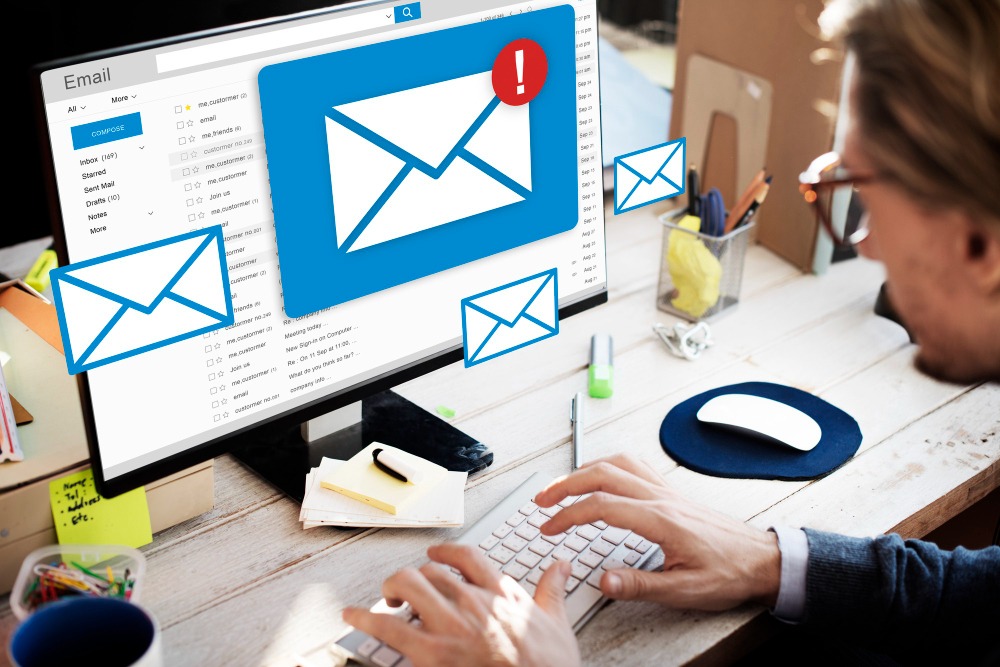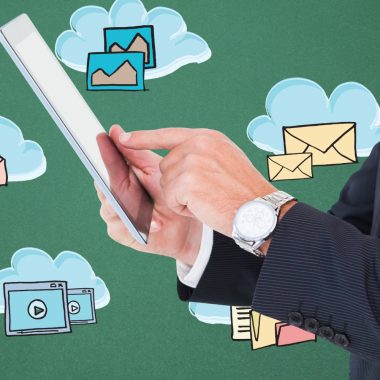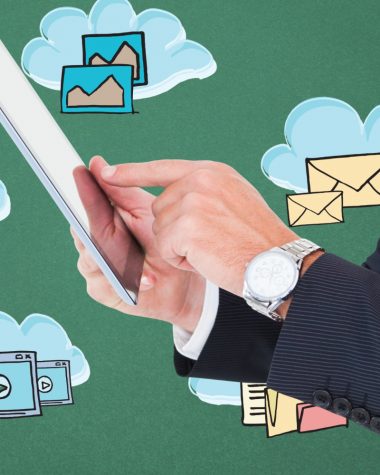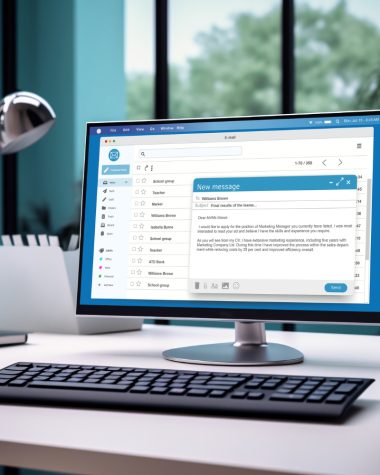In the digital age, email marketing remains a cornerstone of business communication and marketing strategies. This comprehensive guide aims to elucidate the mechanics and nuances of email marketing, exploring its methodologies, advantages, challenges, and best practices.
Whether you’re a seasoned marketer or new to the field, understanding the intricacies of email marketing is crucial for engaging with your audience effectively and driving business growth.
1. The Basics of Email Marketing
What is Email Marketing?
Email marketing is a direct marketing strategy that involves sending emails to a target audience. The primary aim is to promote products, services, or content, but it’s also an effective tool for building relationships with potential and existing customers. This strategy leverages the personal nature of email to deliver tailored and relevant content directly to individuals’ inboxes.
How Email Marketing Works
At its core, email marketing involves three key steps:
List Building: Accumulating a list of email addresses from potential customers, usually through sign-ups on a website.
Message Creation: Designing and drafting emails that are both engaging and relevant to the audience.
Sending and Tracking: Delivering emails to the list and monitoring their performance through various metrics, such as open rates, click-through rates, and conversions.
2. Components of an Effective Email Campaign
Building an Email List
A robust email list is the foundation of successful email marketing. This list can be built in several ways:
Opt-in Forms: Placing sign-up forms on your website.
Lead Magnets: Offering valuable content or discounts in exchange for email addresses.
Social Media Campaigns: Utilizing platforms like Facebook or Instagram to encourage sign-ups.
Crafting the Email
An effective email generally includes:
Subject Line: A compelling and clear preview of the email content.
Personalization: Using the recipient’s name or other personal details to create a more engaging experience.
Content: Relevant and valuable information tailored to the audience.
Call-to-Action (CTA): A clear instruction on what the recipient should do next, such as “Buy Now” or “Learn More.”
Design and Layout
Visual appeal is vital. Emails should be:
Visually Engaging: Use of images, videos, or graphics to capture attention.
Responsive Design: Optimization for various devices, especially mobiles.
Easy to Navigate: Clear layout with easy-to-read fonts and colors.
3. The Benefits of Email Marketing
Cost-Effective
Compared to other marketing channels, email marketing is relatively inexpensive. It offers a high return on investment (ROI), making it ideal for businesses of all sizes.
Targeted and Personalized Communication
Emails can be segmented based on various criteria like demographics, purchase history, or user behavior, alloying for highly personalized and relevant content.
Measurable Results
With advanced tracking tools, marketers can measure open rates, click-through rates, and conversions, enabling them to adjust strategies for better results.
Builds Relationships
Regular and relevant emails can help businesses build and maintain relationships with their audience, fostering loyalty and repeat business.
4. Challenges in Email Marketing
Deliverability Issues
Emails might end up in the spam folder or get blocked by ISPs, affecting deliverability. Ensuring clean email lists and adhering to best practices is crucial.
Overcrowded Inboxes
Standing out in an overcrowded inbox is challenging. Crafting unique and compelling content is essential for catching the recipient’s attention.
Compliance with Regulations
Email marketers must comply with laws like GDPR or CAN-SPAM Act, which regulate how businesses can collect, use, and store personal data.
5. Best Practices in Email Marketing
Consent is Key: Always obtain permission before adding someone to your email list.
Segment Your List: Tailor your content to different segments of your audience for better engagement.
Test and Optimize: Regularly test different elements like subject lines, content, and sending times to optimize performance.
Value-Driven Content: Provide content that is useful and relevant to your audience.
Regular but Non-Intrusive Sending: Maintain a balance in email frequency to keep your audience engaged without overwhelming them.
Email marketing, when executed correctly, is a powerful tool for businesses to reach and engage their audience effectively. By understanding its mechanisms, embracing its benefits, and navigating its challenges, businesses can craft successful email marketing campaigns that foster strong customer relationships and drive growth.
As technology evolves, so do the strategies in email marketing, necessitating continuous learning and adaptation to stay ahead in the game.
6. Advanced Strategies in Email Marketing
A/B Testing
A/B testing, also known as split testing, involves sending two variations of an email to different segments of your audience to see which performs better. This method is essential for understanding customer preferences and optimizing email campaigns for higher engagement and conversion rates.
Automation and Drip Campaigns
Email automation allows marketers to send timely, relevant emails automatically based on specific triggers, such as a welcome email after sign-up or a follow-up email after a purchase. Drip campaigns are a form of automated emails that are sent out at predetermined intervals, nurturing leads and guiding them through the sales funnel.
Integrating with Other Marketing Channels
Integrating email marketing with other channels, such as social media, content marketing, or search engine optimization, creates a unified marketing strategy. This approach ensures a consistent brand message across all platforms and leverages the strengths of each channel for greater impact.
7. The Future of Email Marketing
Personalization and AI
Advancements in AI and machine learning are making email personalization more sophisticated. AI can analyze customer data to predict preferences and behavior, allowing for highly personalized and targeted email content.
Interactive Emails
Interactive elements in emails, such as polls, surveys, or clickable games, can significantly increase engagement. As technology advances, the possibilities for interactive and immersive email experiences grow.
Privacy and Data Security
With increasing concerns over data privacy and security, email marketers must prioritize protecting their subscribers’ data. Adhering to privacy laws and using secure email marketing platforms will become even more crucial.
8. Email Marketing Metrics to Monitor
Open Rate: The percentage of recipients who open an email.
Click-Through Rate (CTR): The percentage of recipients who click on one or more links within an email.
Conversion Rate: The percentage of recipients who complete a desired action, like making a purchase.
Bounce Rate: The percentage of emails that could not be delivered to the recipient’s inbox.
Unsubscribe Rate: The rate at which people are opting out of your email list.
Monitoring these metrics helps in understanding the effectiveness of your email campaigns and in making data-driven decisions.
Email marketing is an ever-evolving landscape, requiring marketers to stay abreast of new trends, technologies, and best practices. It’s not just about sending emails; it’s about creating meaningful interactions with your audience, building trust, and providing value. By mastering the art and science of email marketing, businesses can unlock its full potential, fostering lasting relationships with customers and driving sustainable growth.
Email marketing, when strategically implemented, is a highly effective tool for customer engagement and business growth. It combines the art of communication with the science of data and technology, offering a platform for businesses to connect with their audience in a personalized and impactful way.
Top 20 Most Successful Email Marketing Campaigns Ever
Exploring the world of email marketing reveals some truly innovative and successful campaigns that have set the bar high for businesses across various sectors. Here’s a roundup of some of the most successful email marketing campaigns ever, highlighting their unique strategies and key takeaways:
Netflix: Known for its personalized, image-heavy emails, Netflix excels in capturing attention with vibrant content and minimal text, tailoring recommendations to individual preferences.
Starbucks: Starbucks’ email campaigns stand out for their storytelling and engaging promotions, using simple iconography to update customers about new products and partnerships.
Venmo: Focusing on security updates and purchase protection, Venmo’s campaigns effectively address customer concerns, building trust without necessitating purchases.
Uncommon Goods: This online marketplace uses respectful and clear copy in its product emails, especially for items like memorial glass sculptures, enhancing customer understanding without needing external links.
Charity: Water: Their campaigns feature data-centric copy and powerful statistics about the water crisis, using thought-provoking images to make a strong impact in crowded inboxes.
Uber: Employing animated graphics, Uber’s emails draw attention to important messages about safety and security features, enhancing brand trust directly in customers’ inboxes.
Dropbox: Catering to multiple audiences, Dropbox’s emails demonstrate a clear understanding of their diverse customer base, offering targeted content and solutions.
Study Hall: Specializing in re-engagement, their emails incentivize past customers to return, often highlighting new content or special discounts.
Extra Focus: Utilizing the power of referral marketing, these emails encourage customers to recommend the business to others, often including incentives like discounts or gifts.
Ahrefs: Ahrefs’ explainer emails focus on SEO and content creation tips, providing valuable information and establishing the brand as a knowledgeable authority in its field.
Sweetgreen: Their product news emails are effective in announcing new products or special promotions, often tied to meaningful collaborations or events.
Medium: Known for its curated newsletters that mirror the site’s aesthetic, Medium sends updates from subscribed publications, ensuring relevance and limiting frequency.
JetBlue: Acknowledging customers’ dislike for marketing emails, JetBlue presents entertaining ways to opt-out or minimize communication, enhancing brand image.
Amazon: Utilizing data-driven personalization, Amazon tailors each email based on customer behavior and preferences, effectively promoting products and services like Amazon Pay.
edX: Offering free courses and personalized recommendations, edX’s emails stand out with a clear message and strong calls-to-action (CTAs).
Paytm: Known for its creative marketing strategies, Paytm addresses common issues like expensive transportation, offering digital wallet solutions in their emails.
SproutSocial: With clear CTAs and subject lines, Sprout Social’s emails are aimed at distributing reports and insights, offering valuable content to their audience.
Litmus: Utilizing eye-catching GIFs and animations, Litmus’s emails are engaging and visually appealing, encouraging continued reading and interaction.
BuzzFeed: Famous for its ‘This Week In Cats’ newsletter, BuzzFeed excels in writing compelling content with catchy subject lines and previews, driving high engagement.
Taylor Stitch: Focusing on customer preferences, their emails feature a simple design with inspiring photos and product availability information, prompting quick action.
These campaigns highlight the importance of personalization, clear messaging, visual appeal, and relevance in creating successful email marketing strategies. Each campaign leverages unique approaches to engage their audience, demonstrating the versatility and effectiveness of email marketing across various industries.










